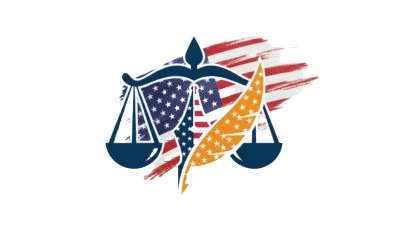Blog
Personal Injury Lawsuit Process Explained: Step-by-Step Guide 2025
Learn the personal injury lawsuit process explained from start to finish, including timelines, legal steps, and tips to maximize your settlement or verdict.
Introduction: Understanding the Personal Injury Lawsuit Process
If you’ve been injured in an accident, understanding the personal injury lawsuit process is critical to protecting your rights and maximizing your compensation. Many victims are unaware of the steps, timelines, and legal strategies involved in filing a personal injury claim.
At American Counsel
, we specialize in guiding clients through every stage of a personal injury case, from initial consultation to settlement or trial. This guide explains the process in clear, actionable steps so you can confidently navigate your case.
Step 1: Initial Consultation with a Personal Injury Lawyer
The lawsuit process begins with a free consultation. During this meeting, the lawyer will:
Review your accident and injury details
Assess medical records and lost wages
Determine liability and potential damages
Explain the contingency fee structure (no fees unless you win)
Useful link: American Counsel Free Consultation
Step 2: Investigation and Evidence Gathering
A strong case requires thorough evidence. During this phase, your lawyer will:
Collect police reports, witness statements, and accident photos
Obtain medical records and bills
Consult with experts such as doctors or accident reconstruction specialists
Evaluate insurance coverage and other liable parties
Fact: According to the Insurance Research Council, over 60% of personal injury claims require detailed evidence collection to support the settlement.
Step 3: Filing the Complaint (Lawsuit Initiation)
Once the case is evaluated, the lawyer will draft and file a complaint in court. This document includes:
The facts of the case
The injuries sustained
The defendant’s alleged negligence
The damages sought
After filing, the defendant is officially served with a summons and must respond within a set period, typically 20–30 days depending on the jurisdiction.
Step 4: Defendant’s Response
The defendant may respond by:
Filing an answer, admitting or denying allegations
Filing a motion to dismiss
Offering a preliminary settlement
Your attorney evaluates the response and develops a strategy for negotiation or litigation.
Step 5: Discovery Phase
Discovery is a critical stage in the personal injury lawsuit process. Both parties exchange information to prepare for trial. This includes:
Interrogatories: Written questions answered under oath
Requests for documents: Medical, financial, and accident records
Depositions: Sworn statements by witnesses and parties
Expert witness reports: Medical and technical evaluations
Fact: Discovery can take several months depending on case complexity.
Useful link: Discovery in Personal Injury Cases - FindLaw
Step 6: Settlement Negotiations
Most personal injury cases are resolved before trial through settlement. During negotiations:
Your lawyer presents evidence and demand letters to the insurance company
Settlement offers are evaluated for fair compensation
Negotiations may include multiple counteroffers
Fact: Over 90% of personal injury cases settle out of court (American Bar Association).
Step 7: Pre-Trial Motions and Hearings
If the case does not settle, pre-trial motions may occur to:
Exclude certain evidence
Resolve procedural issues
Narrow the scope of the trial
Your attorney will prepare for trial while addressing any pre-trial disputes.
Step 8: Trial
If settlement negotiations fail, the case proceeds to trial. Key aspects include:
Jury selection or bench trial (judge only)
Opening statements by both parties
Presentation of evidence and witness testimony
Cross-examinations
Closing arguments
The jury or judge then delivers a verdict, determining liability and damages.
Fact: Trials are less common in personal injury; most cases settle, but trials are critical for high-value or disputed claims.
Step 9: Post-Trial Motions and Appeals
After a verdict, either party may file post-trial motions or appeal the decision if errors occurred. Appeals can focus on:
Legal errors during trial
Jury misconduct
Improper exclusion or admission of evidence
Fact: Appeals can extend the case by months or even years.
Step 10: Collecting Your Settlement or Judgment
Once the case is resolved:
Your lawyer ensures proper distribution of settlement funds
Deducts contingency fees and case expenses
Handles any structured settlements or installment payments
Example: If your case settles for $300,000 with a 33% contingency fee, you receive ~$200,000 after fees.
Tips to Navigate the Personal Injury Lawsuit Process
Document everything – medical records, accident photos, witness info
Communicate promptly with your attorney
Avoid social media posts about your case
Follow medical advice – missed treatment can reduce damages
Consult experts for serious injuries to quantify future damages
Key Facts About Personal Injury Lawsuits
Average time to resolve a case: 6 months to 2 years
Most cases settle before trial (90–95%)
Settlements vary: minor injuries ~$10,000–$50,000, severe injuries $250,000+
Legal representation increases recovery by 3–5x compared to self-representation
Why Choose American Counsel
Expert Guidance: We explain the entire lawsuit process clearly.
Personalized Strategy: Every case is tailored for maximum results.
Transparent Fees: Contingency-based; no fees unless you win.
Proven Results: Millions recovered for accident victims nationwide.
Useful link: American Counsel Personal Injury Practice
Conclusion: Navigating the Personal Injury Lawsuit Process with Confidence
Understanding the personal injury lawsuit process explained ensures you make informed decisions, protect your rights, and maximize compensation. From consultation and evidence gathering to settlement or trial, having a skilled personal injury attorney is critical.
Contact American Counsel
today for a free consultation. We’ll guide you through the entire process and help you achieve the justice and compensation you deserve.
